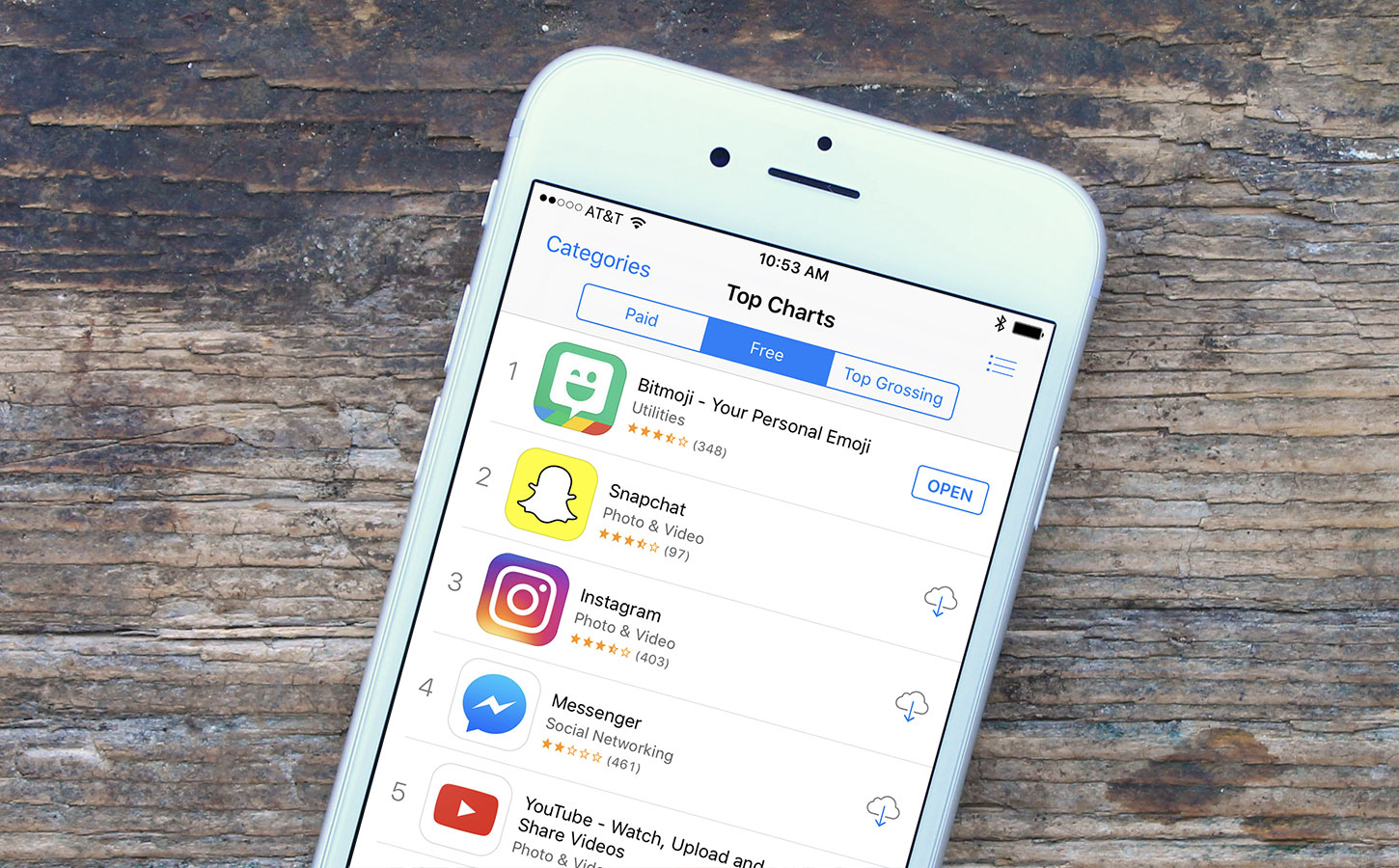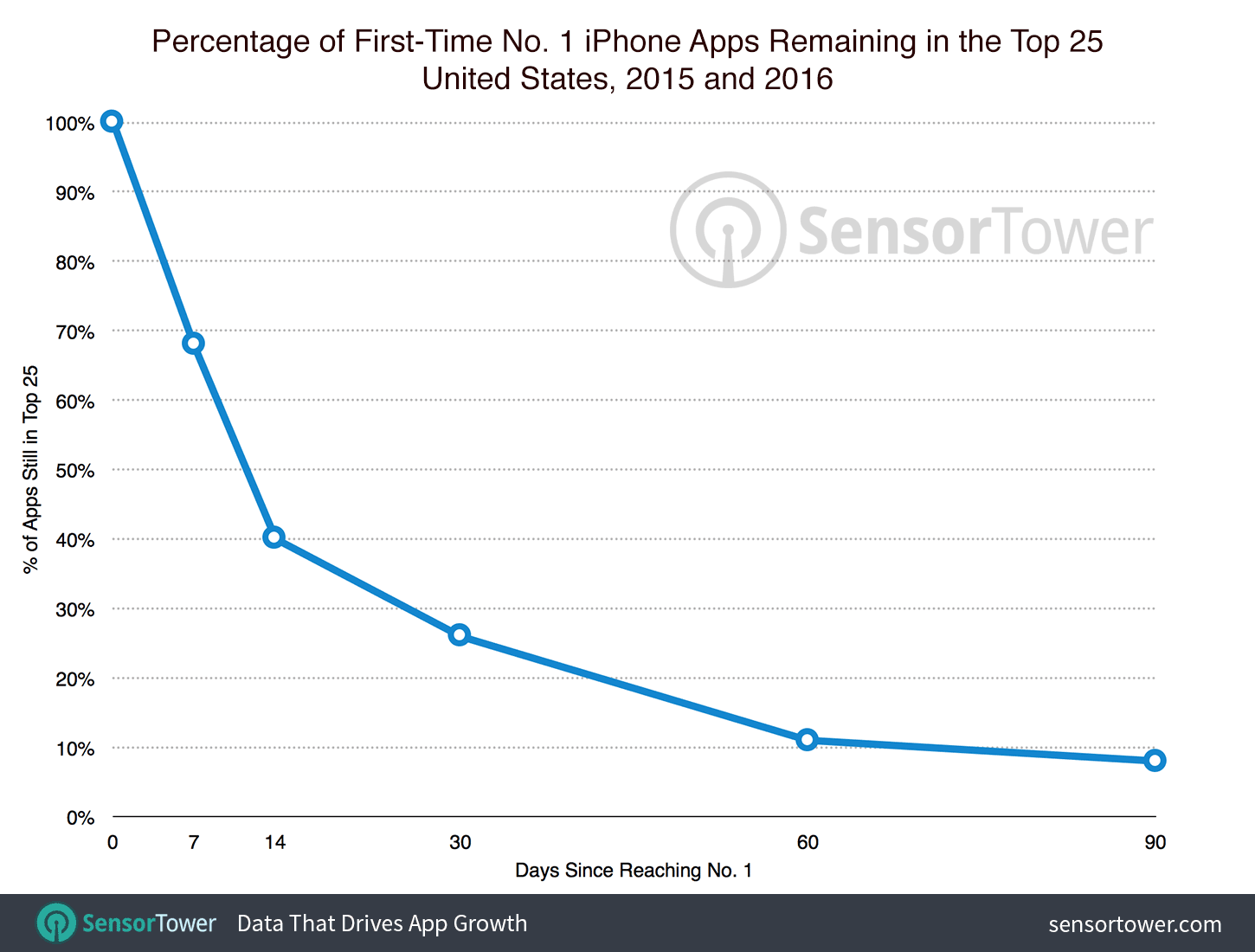Predictions for the Digital Economy in 2026 Report is Live!
Mobile App Insights · Ruika Lin · March 2017
74% of No. 1 iPhone Apps Don't Last a Month in the Top 25
Sensor Tower data shows that of apps that reached No. 1 on iPhone during 2015 and 2016, only 26 percent remained in the top 25 after a month.

Developers spend a substantial amount of time and money attempting to drive their apps to the top of the App Store charts. But reaching the coveted No. 1 ranking for downloads doesn't necessarily ensure longterm visibility on the App Store. In fact, as Sensor Tower's App Intelligence data shows, of the apps that reached No. 1 for the first time on the U.S. App Store during the past two years, 74 percent dropped out of the top 25 within a month—and merely 8 percent remained there after three months.
The Fleeting Fame of No. 1 Apps

Twenty-two apps topped the U.S. App Store downloads ranking on iPhone for the first time in 2015. That number increased to 31 in 2016, for a total of 53 in the past two years. As the chart above illustrates, after they reached the top, most apps' discoverability rapidly diminished.
While all of them ranked in the top 25 for at least two days, 68 percent remained for a week or longer, followed by only 25 percent that lasted for more than a month. Only six out of the 53 apps continued to rank in top 25 two months after reaching No. 1. A vast majority of the apps—92 percent—ranked below No. 25 three months after reaching the top of the chart.
In terms of apps that reached No. 1 for the first time during the period we analyzed, Color Switch, Bitmoji, and Snapchat remained in the top 25 the longest at 138, 231, and 354 days, respectively. It's worth noting that Snapchat and Bitmoji haven't ranked below No. 25 since they first became the most downloaded iPhone app in the U.S. last year.
Looking at our findings from a different perspective, we also analyzed when most of the top apps began to slip down the rankings.

As shown in the histogram above, the single largest group of first-time No. 1 apps, 43 percent, dropped out of top 25 within 10 days of topping the chart. A further 26 percent of the apps exited the top 25 within 11-20 days, with 74 percent having left within 30 days.
Strategize for Long-Term Visibility
As our data shows, the resources needed to reach No. 1 through traditional user acquisition strategies don't appear to produce a lasting return on investment for most apps.
They face numerous obstacles maintaining a long-term presence at the top of the charts, the most prominent one being the increasing dominance of massive apps such as Facebook, Instagram, Snapchat, and Messenger. With their strong brand recognition and inexhaustible marketing budgets, they consistently lead the download chart while most other apps don't come close.
Rather than devoting all their resources to appearing higher on the download charts, app developers need to consider targeting users with an intent to download by appearing prominently in search results (App Store Optimization) and working with Apple to earn featured promotion on the App Store. To accomplish the latter, developers must constantly evolve their apps with new features tied to Apple initiatives (for example, iMessage App Store), iOS-exclusive functionality, and content centered around major holidays.
In the current era of the App Store, it is crucial for developers to form a well thought-out strategy that focuses on long-term visibility and success.
